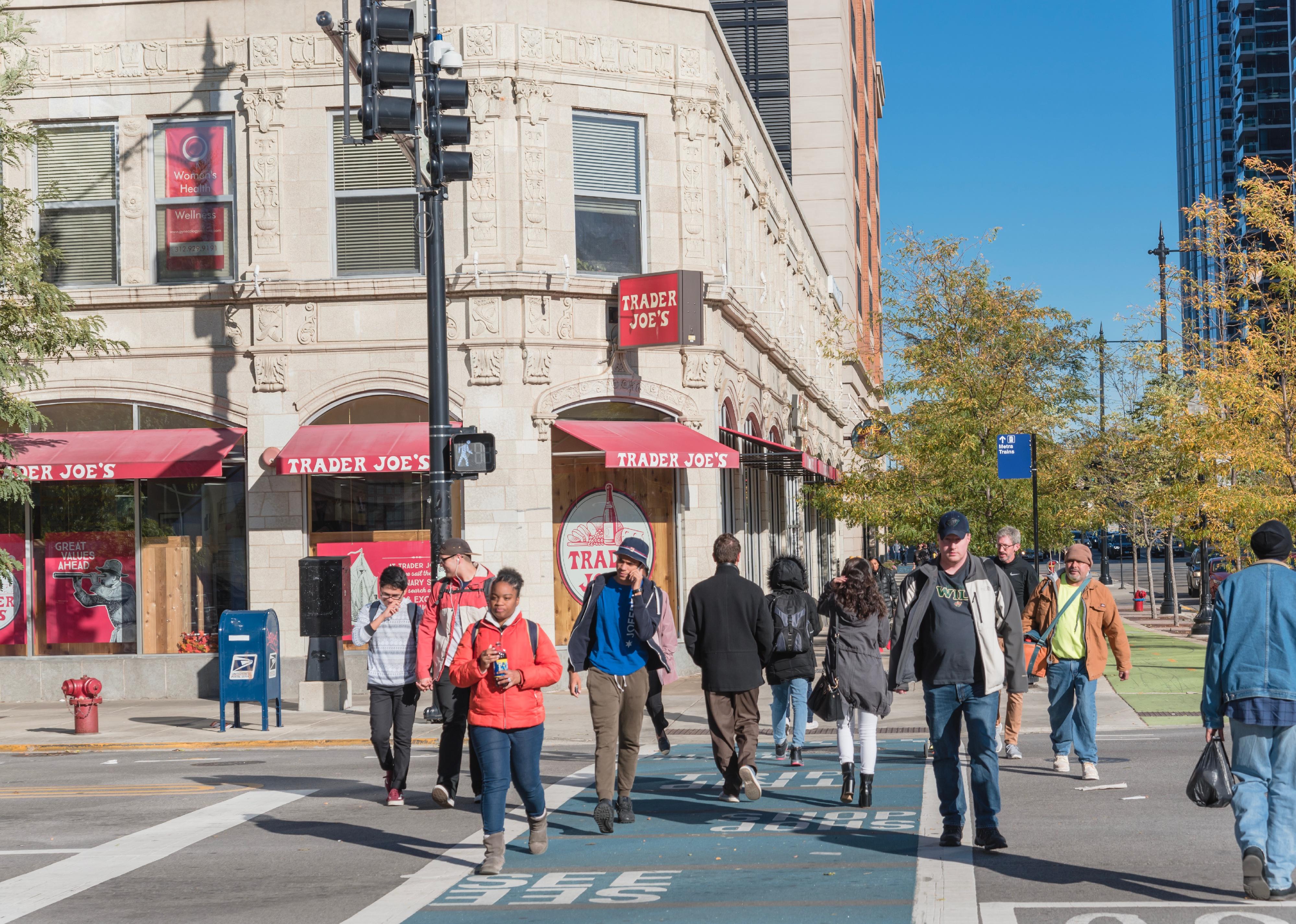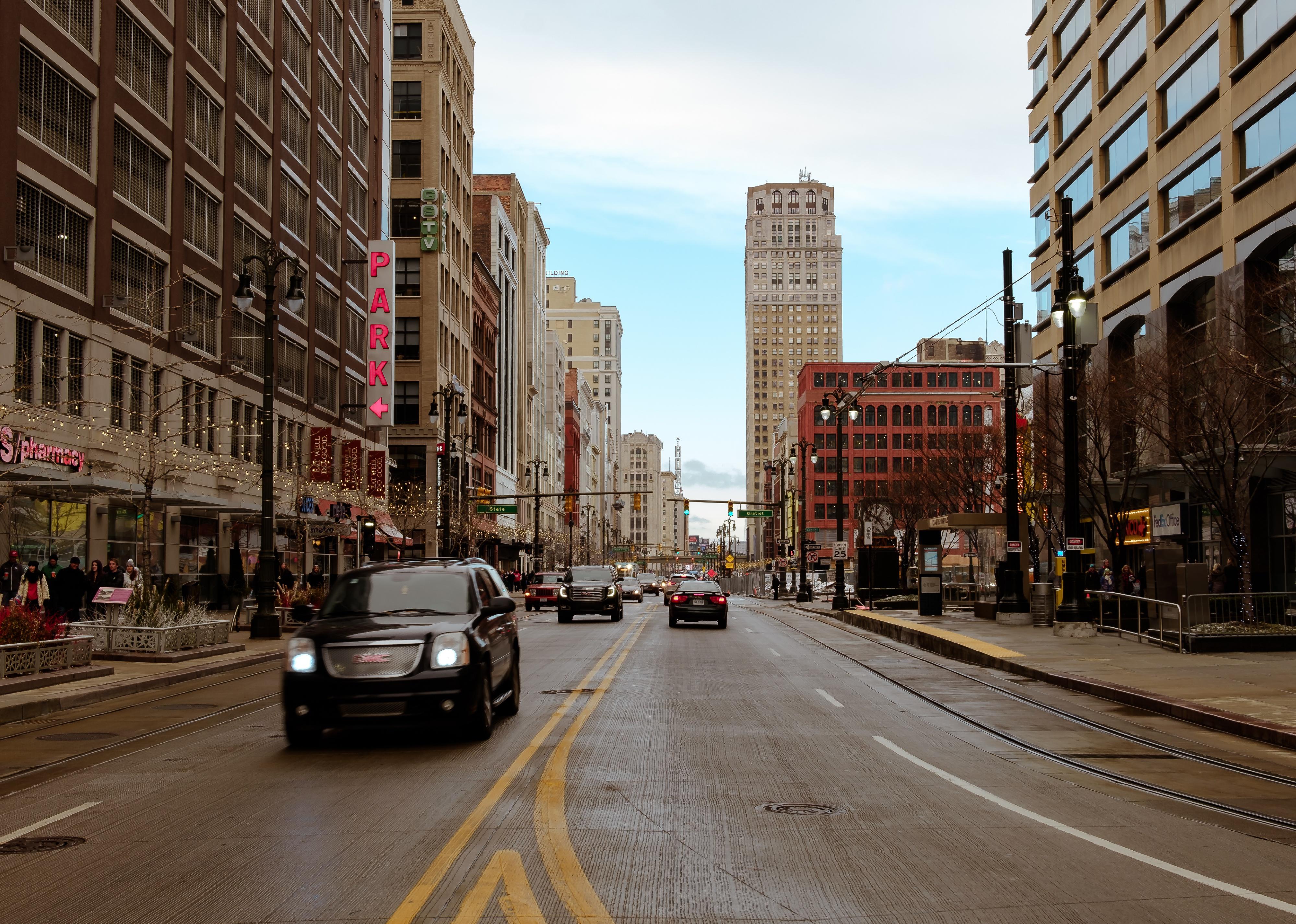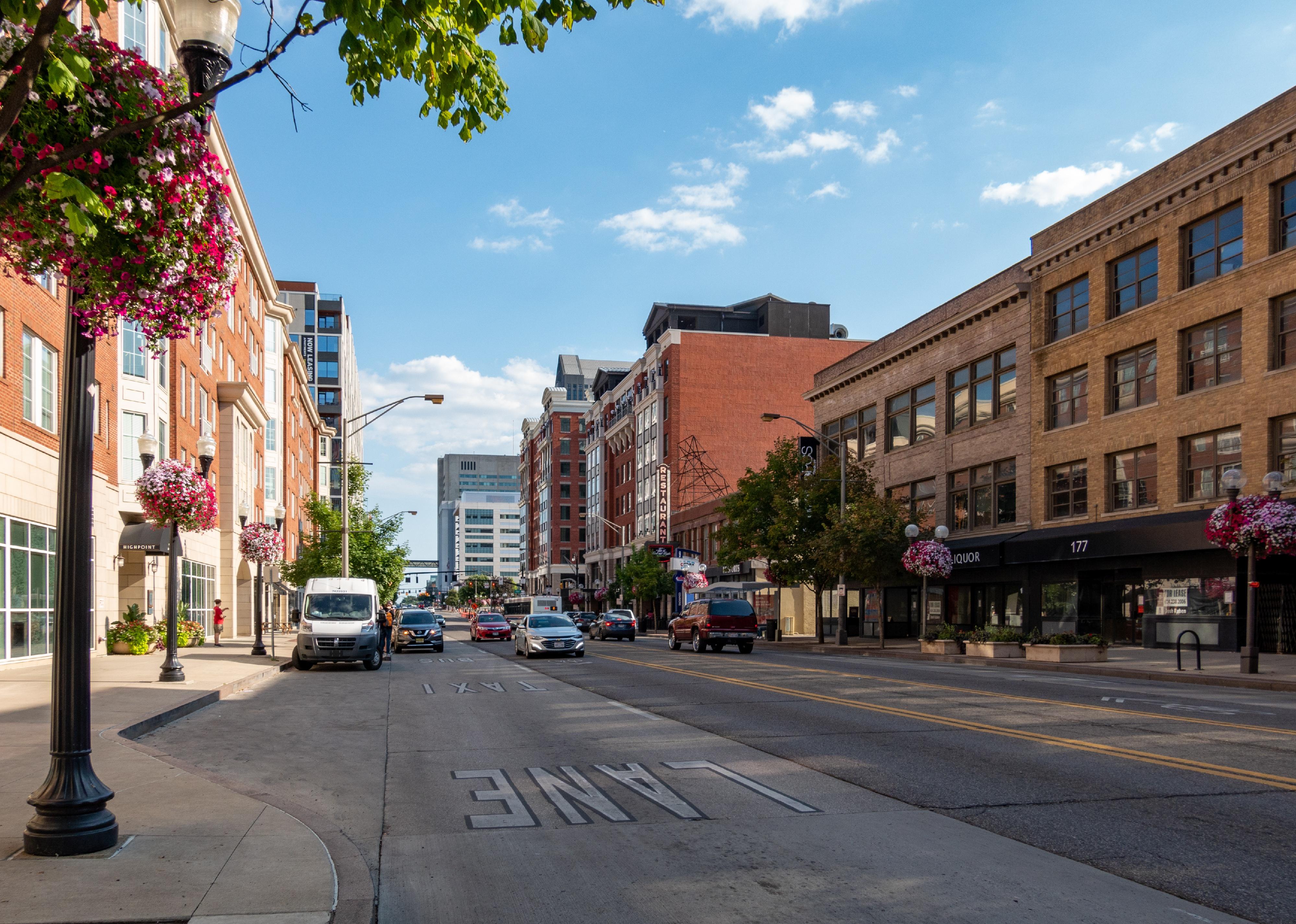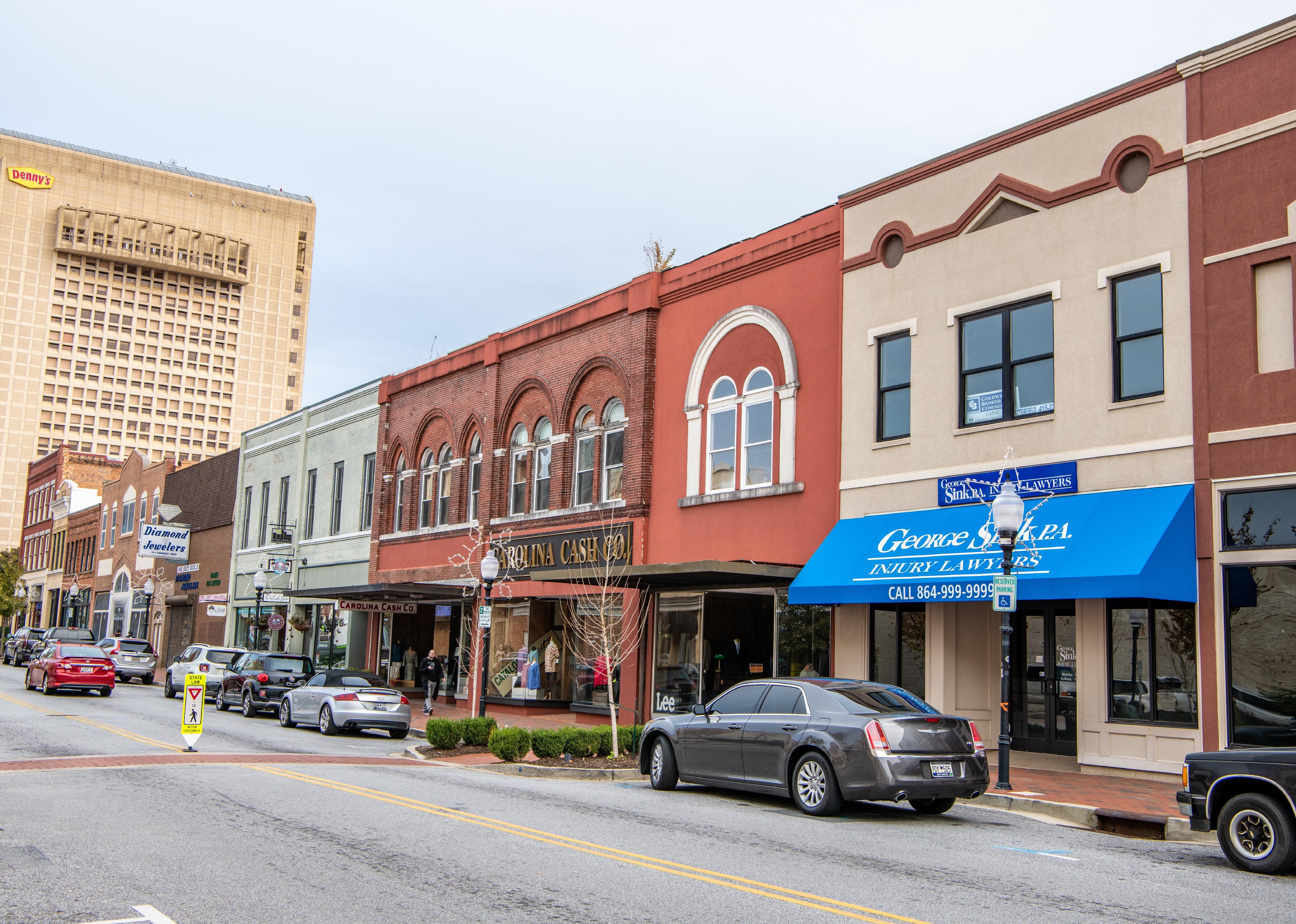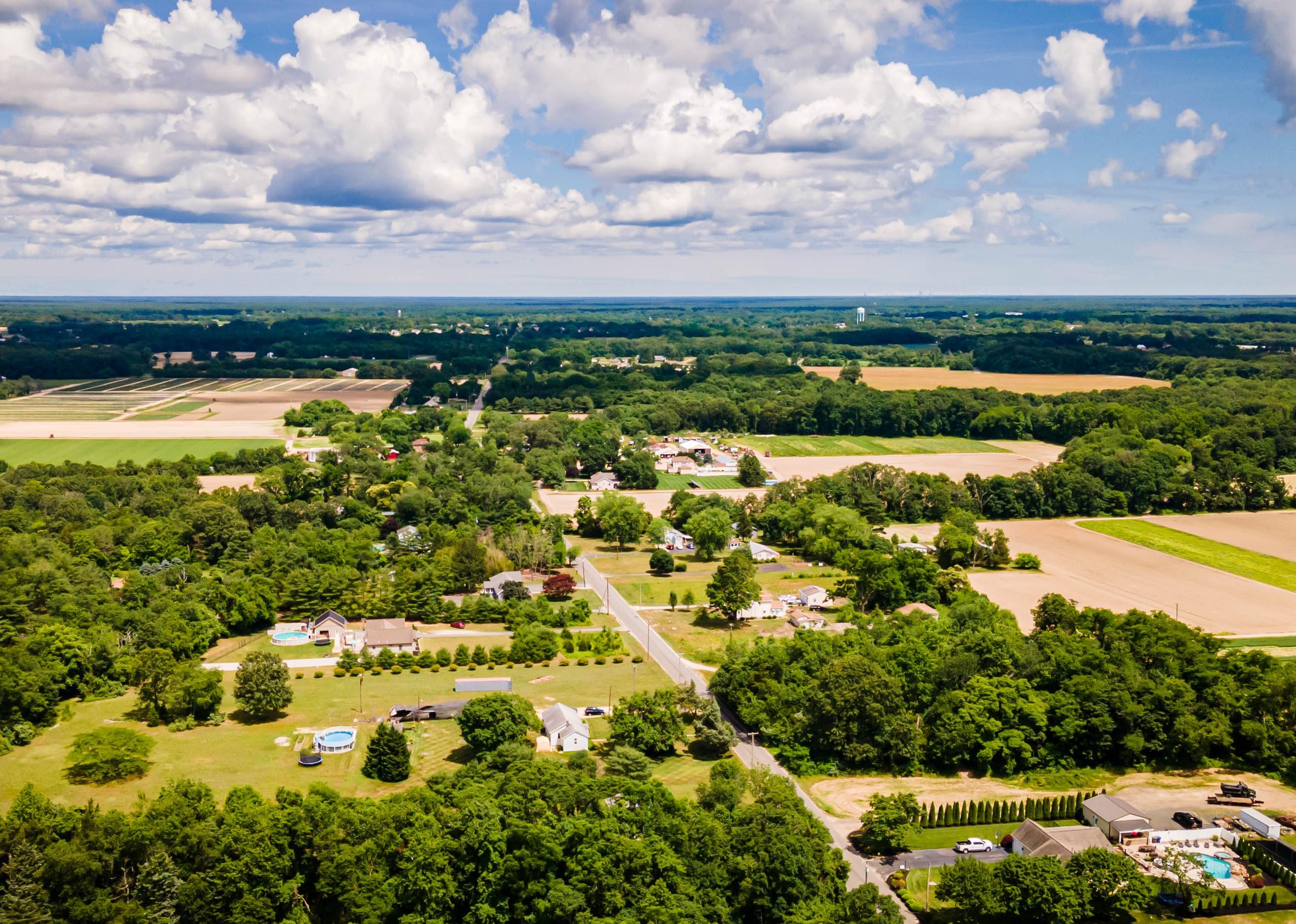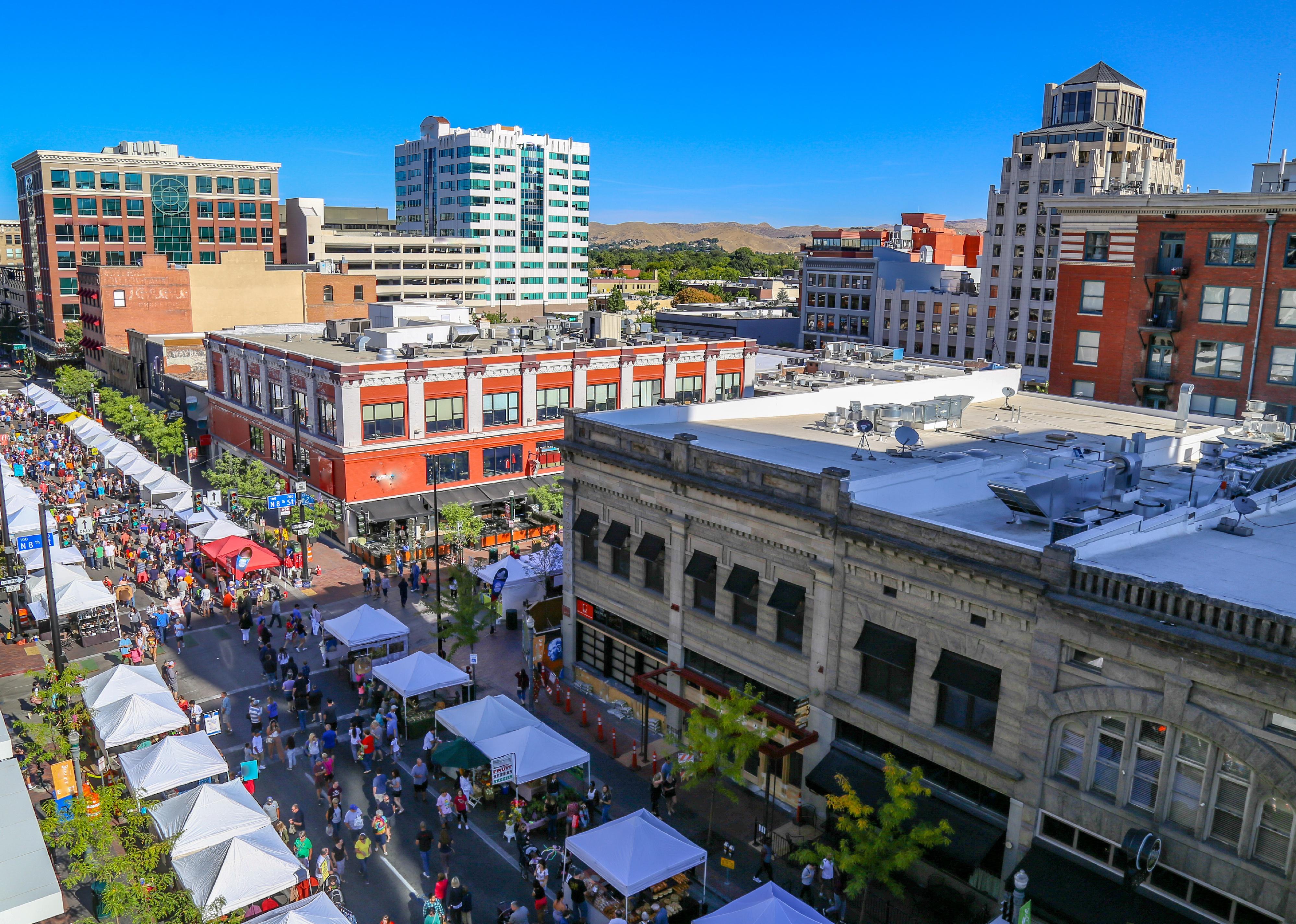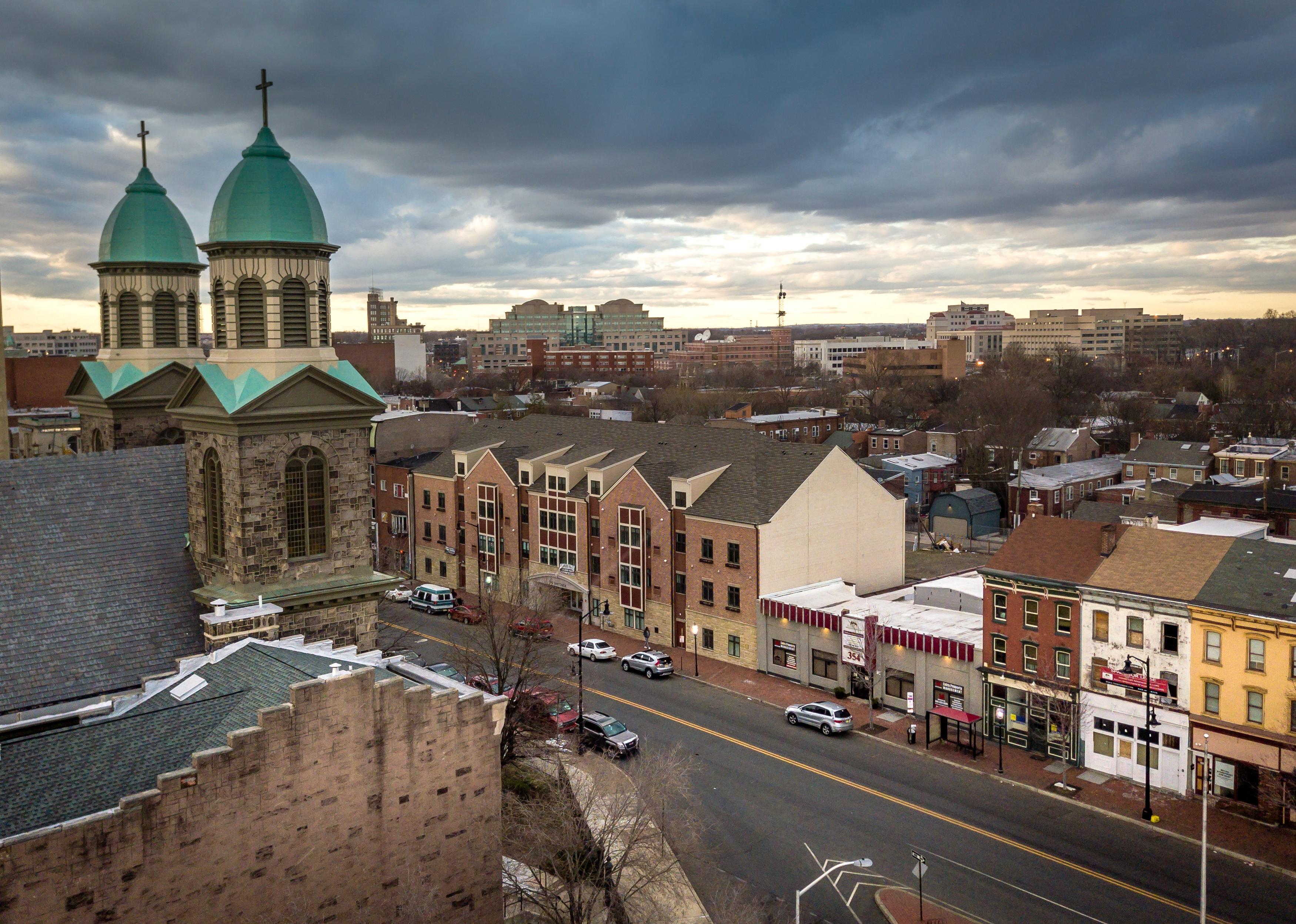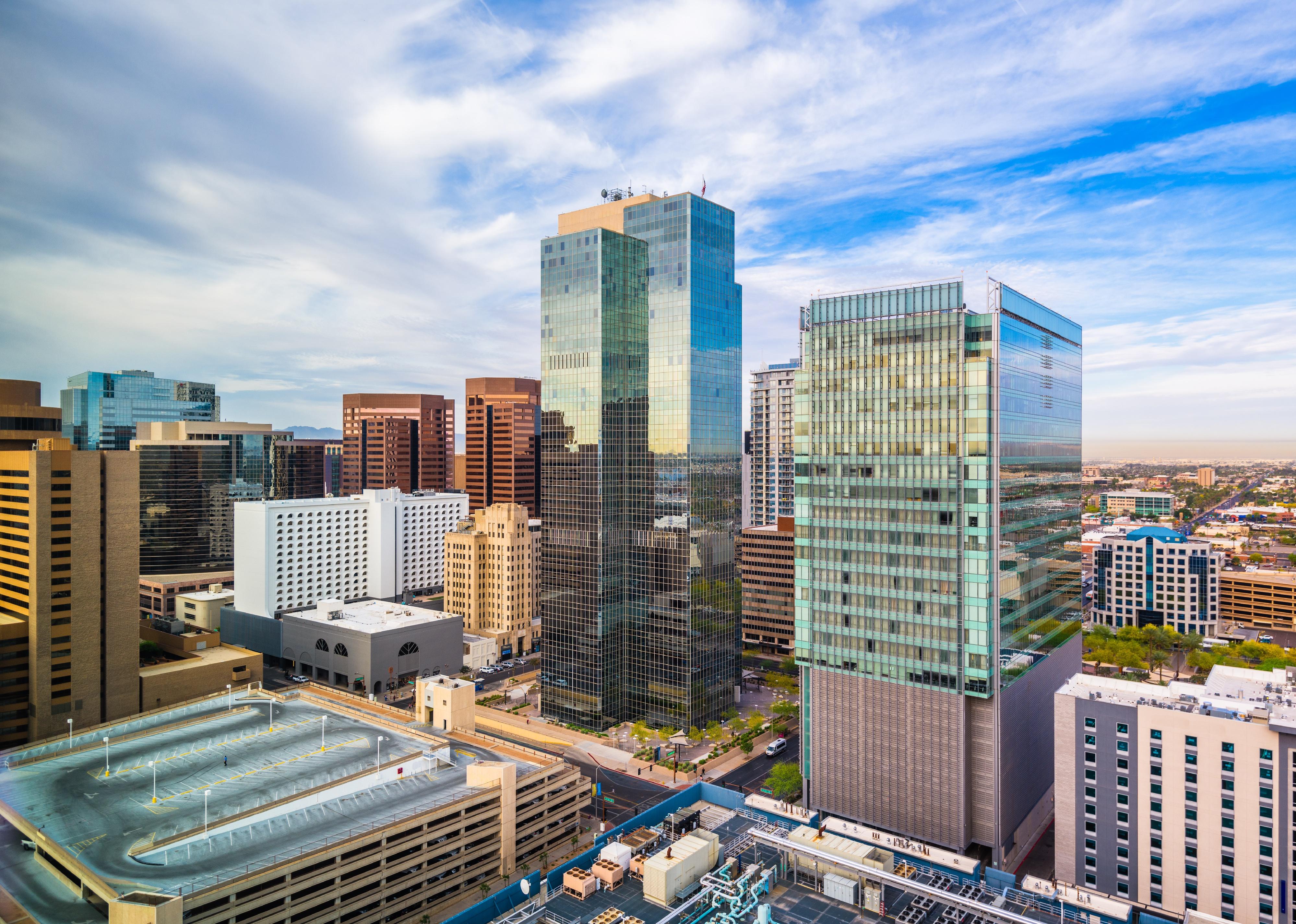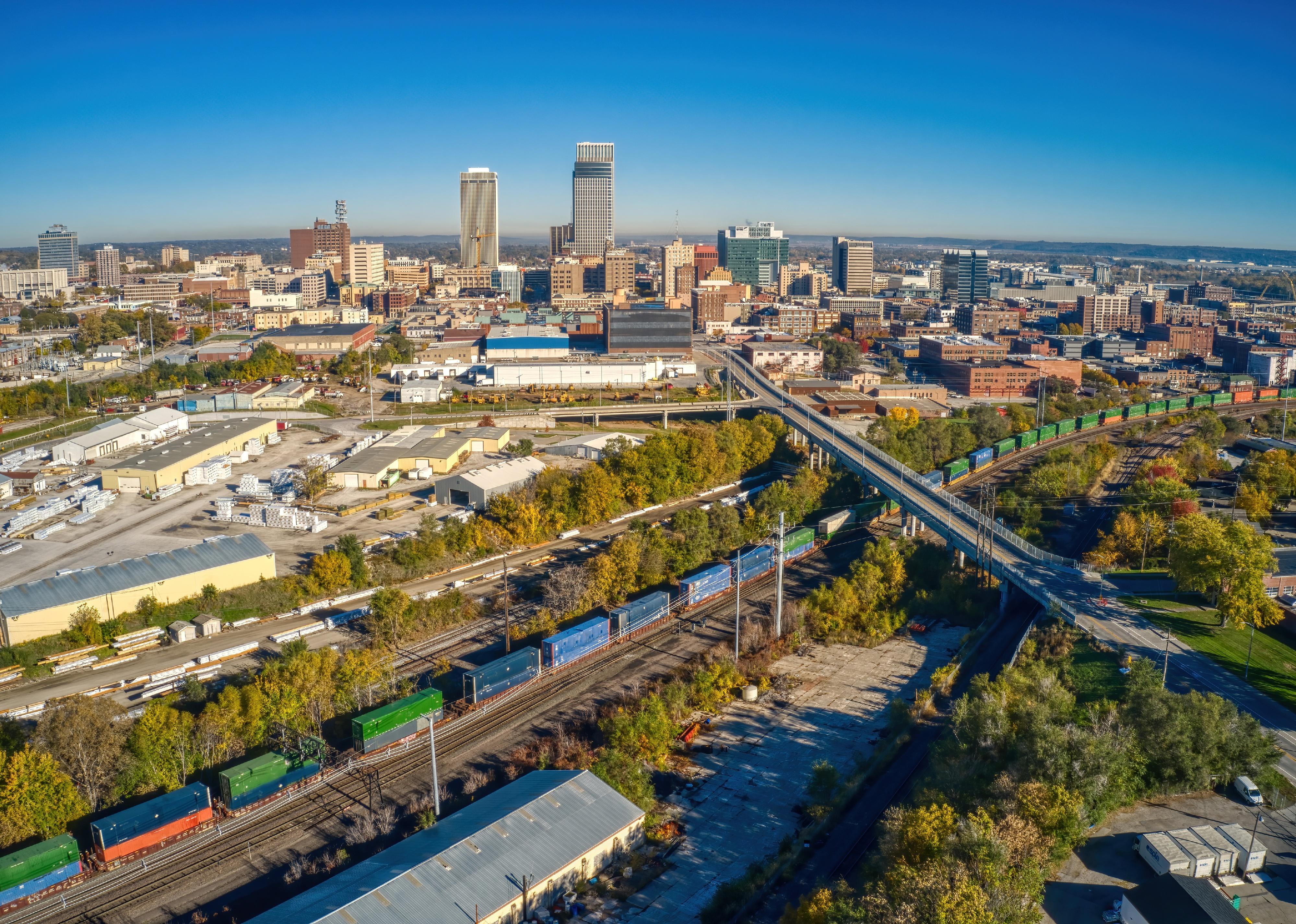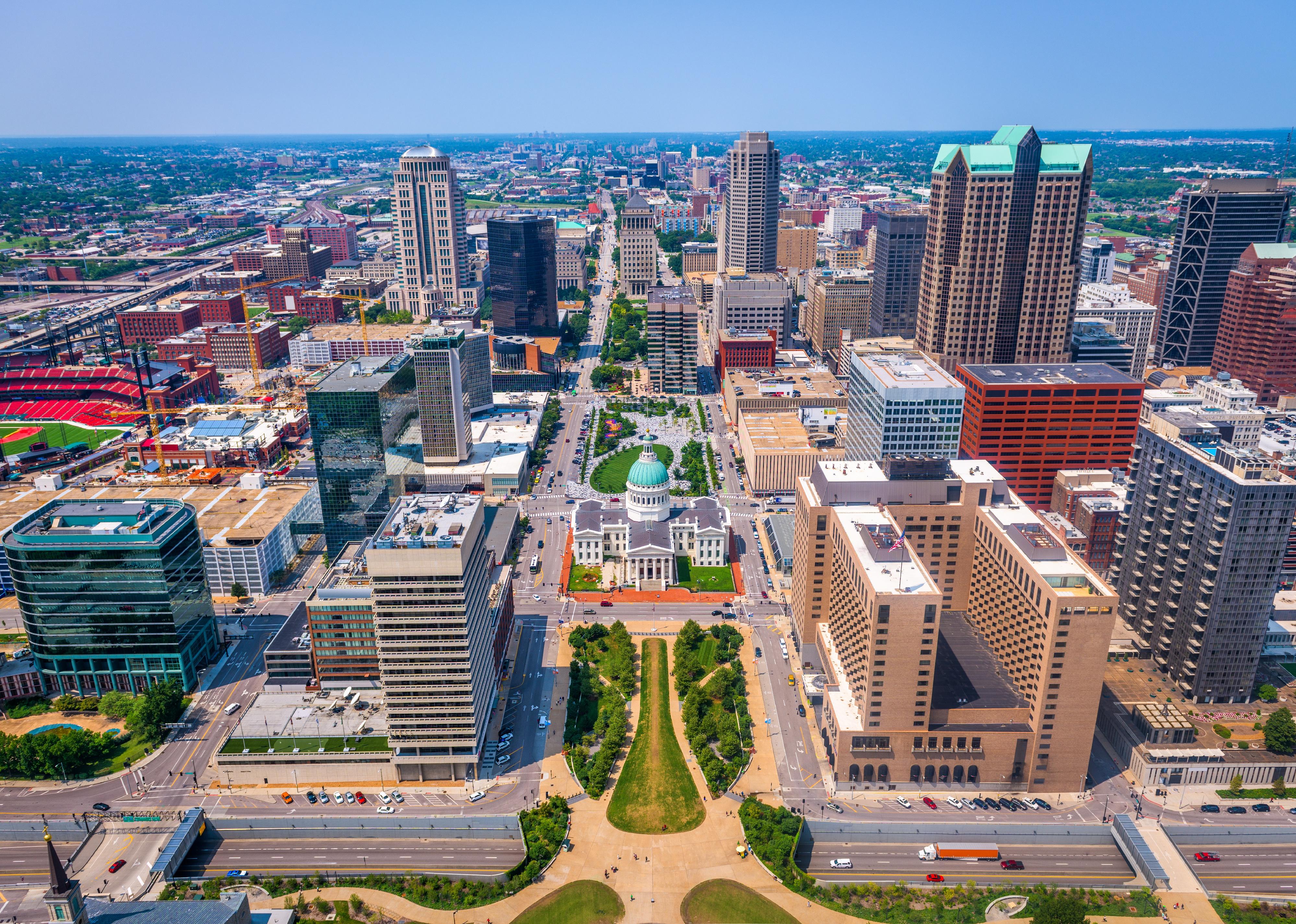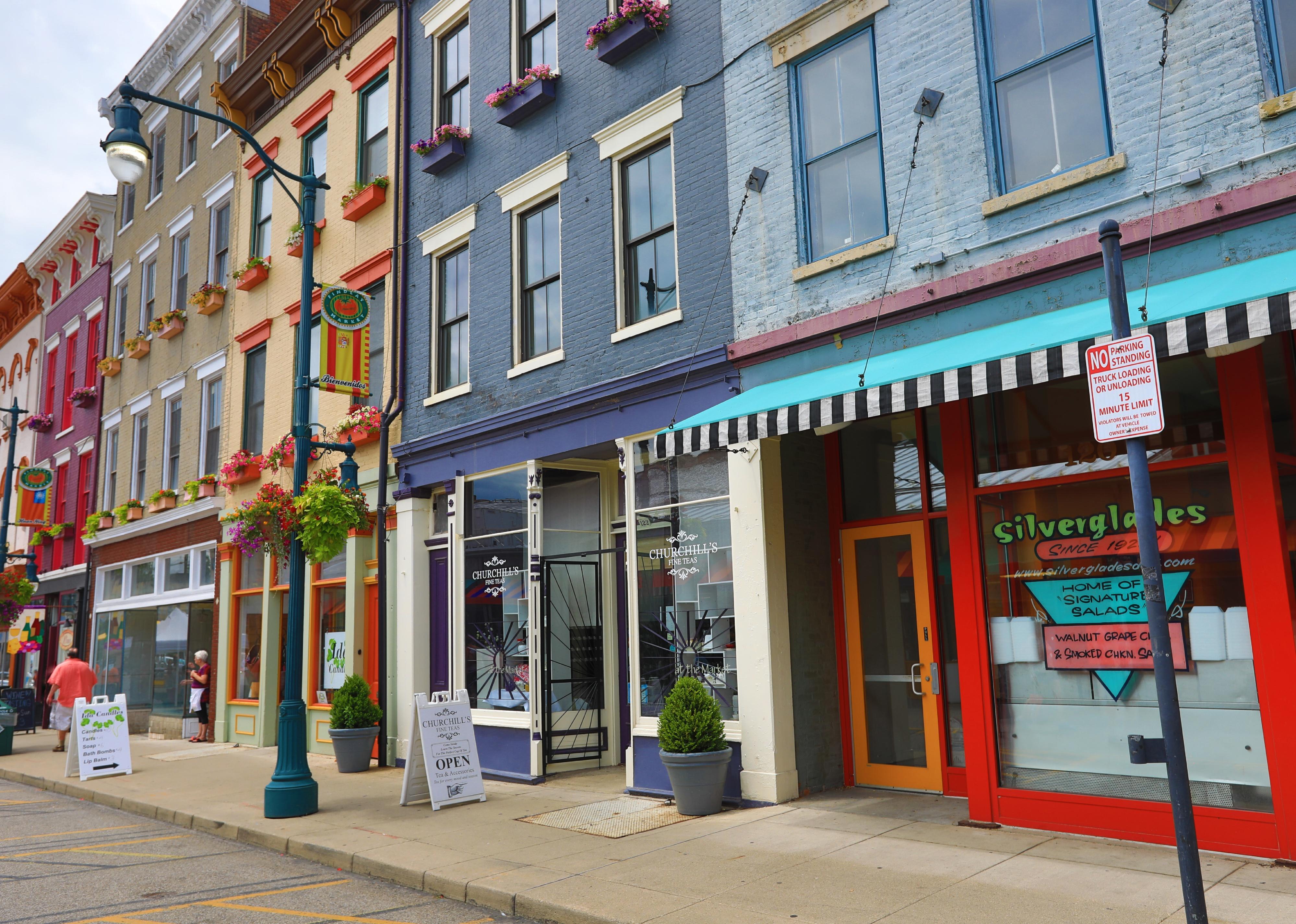Business
Cities with the most opportunity for new retail storefronts
Published
1 year agoon
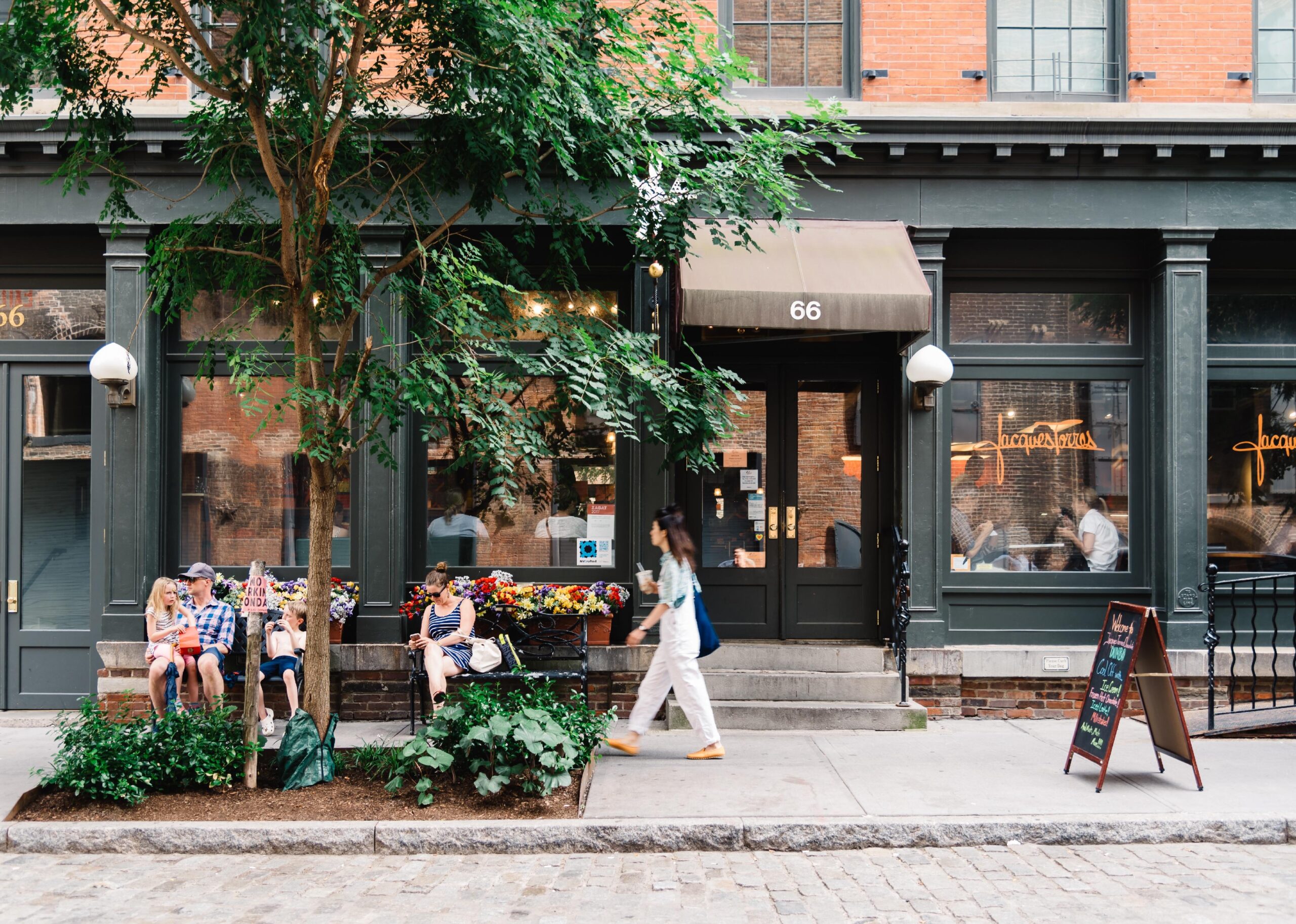
COVID-19 was supposed to change the way Americans shopped. Experts widely predicted that people’s new habits of purchasing most goods online or using in-store and curbside pickup would remain after the pandemic ended. But two years later, consumers have gone back to in-person shopping.
To find which cities have the most opportunity for new retail locations, Swyft Filings used data from Lee & Associates’ 2022 Market Report to rank cities, creating an index that factors in retail space vacancy, cost, and new space being built. To get its index, this analysis looked at July 2022 to September 2022 data and ranked each of those three measures across 53 cities identified in the report, then averaged the rankings.
Brick-and-mortar retail sales topped $382 billion in August 2022, according to Lee & Associates, almost 25% higher than before COVID-19. In-person Black Friday shopping in 2022 was also up 12% from 2021, according to Mastercard SpendingPulse.
As consumers flock back to stores, retailers are opening more physical locations. U.S. retail space is at its lowest vacancy rate in 15 years, at 4.3%, according to Lee & Associates. This is causing retail rents to rise again—they’ve grown 4.2% annually through the third quarter. Supply levels are also on the rise; there are 61 million square feet of retail space in development, much of which is already leased.
![]()
Trong Nguyen // Shutterstock
#15. Chicago (tie)
– Vacancy rate: 5.8% (#4)
– Market rent: $1.70 per square foot (#18)
– Retail space under construction: 1,201,887 square feet (#42)
Chicago’s vacancy rate may be above the national average, but for the city, it’s at an all-time low.
North Michigan Avenue, one of the city’s major shopping streets, has lost some major retailers and is almost 30% vacant. This has provided opportunities for unique pop-up shops along the Magnificent Mile. Experiential retail, where customers can do more than examine items for sale, has also made a big push in Chicago. For example, Lululemon’s Lincoln Park location allows shoppers to test the Mirror fitness system or do meditation in the store’s designated Quiet Room.
EQRoy // Shutterstock
#15. Lehigh Valley, Pennsylvania (tie)
– Vacancy rate: 5.2% (#13)
– Market rent: $1.32 per square foot (#7)
– Retail space under construction: 82,900 square feet (#44)
Lehigh Valley offers retailers a low barrier to entry, with rents far below the overall U.S. rate of $1.95 per square foot. Nine stores opened at Lehigh Valley Mall in 2022, with at least two more on the way. Multiple mixed-use developments throughout the area are in various stages of government approval that could add dining, grocery, and entertainment options to the valley’s retail scene.
JKPhotogenic // Shutterstock
#14. Detroit
– Vacancy rate: 5.1% (#14)
– Market rent: $1.48 per square foot (#13)
– Retail space under construction: 735,283 square feet (#35)
The retail scene in Detroit is evolving.
Several traditional shopping malls in the metro area are being torn down, with some destined to be replaced by mixed-use development that will put residents closer to retail opportunities.
Meanwhile, a $1.5 billion project called District Detroit—which would incorporate residential, office, hotel, and retail space—aims to reinvigorate downtown. The development, which would include 100,000 square feet of retail space, is still in the planning stages.
CEW // Shutterstock
#12. Columbus, Ohio (tie)
– Vacancy rate: 4.0% (#31)
– Market rent: $1.51 per square foot (#15)
– Retail space under construction: 892,906 square feet (#14)
A slow recovery in workers returning to office buildings poses challenges for the retail market in Columbus. That said, local organizations are finding innovative ways to draw retail customers.
In October 2022, the Columbus Downtown Development Corporation and Columbus Fashion Council partnered to open Common Thread, an incubator hosting new retailers in the downtown area.
Page Light Studios // Shutterstock
#12. Spartanburg, South Carolina (tie)
– Vacancy rate: 4.5% (#22)
– Market rent: $1.06 per square foot (#1)
– Retail space under construction: 67,346 square feet (#37)
Spartanburg’s population grew by 18% between April 2010 and July 2021, which has increased the demand for more retail opportunities in the city. Vacancy rates have fallen in the last year, but an unprecedented amount of commercial development in Greenville County could open up more potential for new storefront space. The area has the lowest rental price per square foot on this list, and developers hope this will attract experiential-based retailers to the area.
Nate Hovee // Shutterstock
#11. Dallas-Fort Worth
– Vacancy rate: 4.8% (#20)
– Market rent: $1.81 per square foot (#24)
– Retail space under construction: 3,309,783 square feet (#15)
With almost 15% population growth since 2010, the Dallas-Fort Worth market has no shortage of retail demand. Supply is increasing—this metro area ranks in the top 10 metros with the most new inventory. That could make room for a lot of growth, as new retail tenants in the area—particularly small businesses—are most interested in stores fewer than 5,000 square feet, according to research firm CoStar.
Nick Vendetta // Shutterstock
#10. Vineland, New Jersey
– Vacancy rate: 6.1% (#2)
– Market rent: $1.18 per square foot (#3)
– Retail space under construction: 0 square feet (#53)
New Jersey’s largest city in terms of land area, Vineland sits in the central southern part of the state and is known as a hub of food processing. New stores have opened up or expanded to additional sites in recent years, but some mall owners have boosted occupancy by redeveloping retail space as fulfillment centers for online orders. Vineland’s historic downtown is part of the city’s redevelopment area and offers many incentives to businesses located there, including small business assistance programs, loans and microloans, and wage credits for hiring locally.
Sean Pavone // Shutterstock
#9. Houston
– Vacancy rate: 5.0% (#16)
– Market rent: $1.84 per square foot (#27)
– Retail space under construction: 4,527,218 square feet (#9)
Houston has made a good recovery from the pandemic in terms of job creation and new retail outlets. Hundreds of stores have opened in the last two years, which has caused the retail vacancy rate to decrease steadily, especially over the last year.
Restaurant concepts have been particularly strong in Houston, where franchises bearing the names of sports greats Tiger Woods and Shaquille O’Neal are joining the scene.
CSNafzger // Shutterstock
#8. Boise, Idaho
– Vacancy rate: 3.6% (#37)
– Market rent: $1.34 per square foot (#8)
– Retail space under construction: 682,454 square feet (#5)
Boise’s population increased during the pandemic, which has boosted the demand for retail stores. Restaurants are in demand, specifically for units with a drive-through, pickup window, or dedicated parking spots for pickup orders. Boise Towne Square, one of the city’s shopping malls, launched a program in 2022 specifically designed to attract Black- and minority-owned businesses.
Matt Gush // Shutterstock
#6. Inland Empire, California (tie)
– Vacancy rate: 6.1% (#2)
– Market rent: $2.06 per square foot (#35)
– Retail space under construction: 1,657,600 square feet (#12)
During the pandemic, shopping centers that had grocery stores did well in the Inland Empire, according to The Real Deal. Now, other types of retail are in demand across the region, which is east of Los Angeles and includes San Bernardino and Riverside counties. This may be partly due to the area’s population growth—it added 47,601 people between 2020 and 2021. Retailers looking to be part of a new development may have trouble finding space: Some new developments are almost fully preleased when construction starts.
FotosForTheFuture // Shutterstock
#6. Trenton, New Jersey (tie)
– Vacancy rate: 5.7% (#5)
– Market rent: $1.73 per square foot (#23)
– Retail space under construction: 121,600 square feet (#21)
Trenton’s retail market isn’t quite as strong as other metro areas in the country. Trenton’s vacancy rate is higher than the U.S. average of 4.3%, which could be on the rise. The metro area’s absorption rate—the difference in the amount of space being used versus being vacated—has been on a downward trajectory for the third quarter of 2022 compared to the same timeframe in 2021.
Sean Pavone // Shutterstock
#5. Phoenix
– Vacancy rate: 5.6% (#7)
– Market rent: $1.84 per square foot (#27)
– Retail space under construction: 2,215,603 square feet (#11)
Vacancy rates in Phoenix have been trending downward, now hitting levels not seen since the Great Recession. Developers are racing to meet demand—over 1.4 million square feet of space will come online by the end of the first quarter of 2023. While many outdoor malls in the city vie for shoppers’ dollars, smaller businesses tend to occupy street-level retail space.
Jacob Boomsma // Shutterstock
#4. Omaha, Nebraska
– Vacancy rate: 5.0% (#16)
– Market rent: $1.26 per square foot (#5)
– Retail space under construction: 310,936 square feet (#23)
Retail space is in high demand in Omaha, which may increase more due to a slowdown in retail construction during the pandemic. The downtown area lost a lot of foot traffic in 2020 and 2021, but it’s starting to show signs of life as more people return to offices. A new streetcar route may provide more retail development opportunities in the downtown area.
Ludmila Ruzickova // Shutterstock
#2. Harrisburg, Pennsylvania (tie)
– Vacancy rate: 5.5% (#9)
– Market rent: $1.36 per square foot (#10)
– Retail space under construction: 166,778 square feet (#24)
In 2022, the retail market in Harrisburg has turned around. The vacancy rate fell nearly a percentage point from the first quarter to the third quarter. Even though retail space is getting harder to find, rents are still low compared to the nationwide rate of $1.95, giving retailers a lower barrier to entry.
Sean Pavone // Shutterstock
#2. St. Louis (tie)
– Vacancy rate: 5.7% (#5)
– Market rent: $1.29 per square foot (#6)
– Retail space under construction: 614,306 square feet (#32)
Vacancy rates in St. Louis have improved from 6% in the first quarter of 2022, and developers are filling long-vacant shopping centers and seeing new possibilities. A new soccer stadium is spurring residential development in downtown St. Louis, which will provide more customers for retail businesses in this neighborhood. Another proposal aims to transform 67 acres along the Mississippi River into a mixed-use development with 30,000 square feet of retail space. This development could get underway in 2023.
aceshot1 // Shutterstock
#1. Cincinnati
– Vacancy rate: 6.4% (#1)
– Market rent: $1.16 per square foot (#2)
– Retail space under construction: 331,708 square feet (#38)
Mixed-use developments prove to be popular locations for retailers in Cincinnati. Construction has picked up again this quarter, although construction costs have been sticking points in buildouts, which have increased from 15% to 30%, according to real estate management firm Colliers. The firm also told Midwest Real Estate News that for retailers with patience, foot traffic is slowly returning to the downtown area.
This story originally appeared on Swyft Filings and was produced and
distributed in partnership with Stacker Studio.
Founded in 2017, Stacker combines data analysis with rich editorial context, drawing on authoritative sources and subject matter experts to drive storytelling.
You may like
Business
Cashiers vs. digital ordering: What do people want, and at what cost?
Published
2 days agoon
April 26, 2024
You walk into a fast-food restaurant on your lunch break. You don’t see a cashier but instead a self-service kiosk, a technology that is becoming the new norm in eateries across the country. The kiosks usually offer customers a menu to scroll through and pictures of meals and specials with prompts to select their food and submit their payment in one place.
Self-service kiosks are big business. In fact, the market for self-service products is expected to grow from a $40.3 billion market value in 2022 to $63 billion by 2027, according to a report from BCC Research. Consumers do have mixed opinions about the kiosks, but about 3 out of 5 surveyed consumers reported that they were likely to use self-service kiosks, according to the National Restaurant Association. The technology, while expensive, can boost businesses’ bottom lines in the long run.
Task Group summarized the rise in digital ordering over the past couple of years, its acceptance among customers, and a cost analysis of adopting the technology.
Self-service kiosks—digital machines or display booths—are generally placed in high-traffic areas. They can be used for different reasons, including navigating a store or promoting a product. Interactive self-service kiosks in particular are meant for consumers to place orders with little to no assistance from employees.
The idea of kiosks isn’t new. The concept of self-service was first introduced in the 1880s when the first types of kiosks appeared as vending machines selling items like gum and postcards. In the present age of technology, the trend of self-service has only grown. Restaurants such as McDonald’s and Starbucks have already tried out cashierless technology.
From a business perspective, the kiosks offer a huge upside. While many employers are looking for workers, they’re having a hard time finding staff. In the midst of the COVID-19 pandemic, employers struggled with a severe employee shortage. Since then, the problem has continued. In 2022, the National Restaurant Association reported that 65% of restaurant operators didn’t have enough workers on staff to meet consumer demand. With labor shortages running rampant, cashierless technology could help restaurants fill in for the lack of human employees.
The initial investment for the kiosks can be high. The general cost per kiosk is difficult to quantify, with one manufacturer estimating a range of $1,500 to $20,000 per station. However, with the use of kiosks, restaurants may not need as many cashiers or front-end employees, instead reallocating workers’ time to other tasks.
In May 2022, the hourly mean wage for cashiers who worked in restaurants and other eating establishments was $12.99, according to the Bureau of Labor Statistics. Kiosks could cost less money than a cashier in the long run.
But how do the customers themselves feel about the growing trend? According to a Deloitte survey, 62% of respondents report that they were “somewhat likely” to order from a cashierless restaurant if given the chance to do so. The same survey reported that only 19% of respondents had experience with a cashierless restaurant.
What would it mean for society if restaurants did decide to go completely cashierless? Well, millions of positions would likely no longer be necessary. One report suggests 82% of restaurant positions could be replaced by robots, a prospect making automation appealing to owners who can’t find staff to hire.
Due to the ongoing labor shortage, employers have tried raising employee wages. Papa John’s, Texas Roadhouse, and Chipotle were among the restaurant companies that increased employee pay or offered bonuses in an attempt to hire and retain more workers. Meanwhile, some companies have decided to use technology to perform those jobs instead, so that they wouldn’t have to put effort into hiring or focus their existing staff on other roles.
Story editing by Ashleigh Graf and Jeff Inglis. Copy editing by Tim Bruns.
![]()
Founded in 2017, Stacker combines data analysis with rich editorial context, drawing on authoritative sources and subject matter experts to drive storytelling.

It’s well-documented that the surest, and often best, return on investments comes from playing the long game. But between stocks and real estate, which is the stronger bet?
To find out, financial planning firm Wealth Enhancement Group analyzed data from academic research, Standard and Poor’s, and Nareit to see how real estate compares to stocks as an investment.
Data going back to 1870 shows the well-established power of real estate as a powerful “long-run investment.” From 1870-2015, and after adjusting for inflation, real estate produced an average annual return of 7.05%, compared to 6.89% for equities. These findings, published in the 2019 issue of The Quarterly Journal of Economics, illustrate that stocks can deviate as much as 22% from their average, while housing only spreads out 10%. That’s because despite having comparable returns, stocks are inherently more volatile due to following the whims of the business cycle.
Real estate has inherent benefits, from unlocking cash flow and offering tax breaks to building equity and protecting investors from inflation. Investments here also help to diversify a portfolio, whether via physical properties or a real estate investment trust. Investors can track markets with standard resources that include the S&P CoreLogic Case-Shiller Home Price Indices, which tracks residential real estate prices; the Nareit U.S. Real Estate Index, which gathers data on the real estate investment trust, or REIT, industry; and the S&P 500, which tracks the stocks of 500 of the largest companies in the U.S.
High interest rates and a competitive market dampened the flurry of real-estate investments made in the last four years. The rise in interest rates equates to a bigger borrowing cost for investors, which can spell big reductions in profit margins. That, combined with the risk of high vacancies, difficult tenants, or hidden structural problems, can make real estate investing a less attractive option—especially for first-time investors.
Keep reading to learn more about whether real estate is a good investment today and how it stacks up against the stock market.
![]()

Wealth Enhancement Group
Stocks and housing have both done well
REITs can offer investors the stability of real estate returns without bidding wars or hefty down payments. A hybrid model of stocks and real estate, REITs allow the average person to invest in businesses that finance or own income-generating properties.
REITs delivered slightly better returns than the S&P 500 over the past 20-, 25-, and 50-year blocks. However, in the short term—the last 10 years, for instance—stocks outperformed REITs with a 12% return versus 9.5%, according to data compiled by The Motley Fool investor publication.
Whether a new normal is emerging that stocks will continue to offer higher REITs remains to be seen.
This year, the S&P 500 reached an all-time high, courtesy of investor enthusiasm in speculative tech such as artificial intelligence. However, just seven tech companies, dubbed “The Magnificent 7,” are responsible for an outsized amount of the S&P’s returns last year, creating worry that there may be a tech bubble.
While indexes keep a pulse on investment performance, they don’t always tell the whole story. The Case-Shiller Index only measures housing prices, for example, which leaves out rental income (profit) or maintenance costs (loss) when calculating the return on residential real estate investment.

Wealth Enhancement Group
Housing returns have been strong globally too
Like its American peers, the global real estate market in industrialized nations offers comparable returns to the international stock market.
Over the long term, returns on stocks in industrialized nations is 7%, including dividends, and 7.2% in global real estate, including rental income some investors receive from properties. Investing internationally may have more risk for American buyers, who are less likely to know local rules and regulations in foreign countries; however, global markets may offer opportunities for a higher return. For instance, Portugal’s real estate market is booming due to international visitors deciding to move there for a better quality of life. Portugal’s housing offers a 6.3% return in the long term, versus only 4.3% for its stock market.
For those with deep enough pockets to stay in, investing in housing will almost always bear out as long as the buyer has enough equity to manage unforeseen expenses and wait out vacancies or slumps in the market. Real estate promises to appreciate over the long term, offers an opportunity to collect rent for income, and allows investors to leverage borrowed capital to increase additional returns on investment.
Above all, though, the diversification of assets is the surest way to guarantee a strong return on investments. Spreading investments across different assets increases potential returns and mitigates risk.
Story editing by Nicole Caldwell. Copy editing by Paris Close. Photo selection by Lacy Kerrick.
This story originally appeared on Wealth Enhancement Group and was produced and
distributed in partnership with Stacker Studio.
Founded in 2017, Stacker combines data analysis with rich editorial context, drawing on authoritative sources and subject matter experts to drive storytelling.
Business
5 tech advancements sports venues have added since your last event
Published
1 week agoon
April 19, 2024
In today’s digital climate, consuming sports has never been easier. Thanks to a plethora of streaming sites, alternative broadcasts, and advancements to home entertainment systems, the average fan has myriad options to watch and learn about their favorite teams at the touch of a button—all without ever having to leave the couch.
As a result, more and more sports venues have committed to improving and modernizing their facilities and fan experiences to compete with at-home audiences. Consider using mobile ticketing and parking passes, self-service kiosks for entry and ordering food, enhanced video boards, and jumbotrons that supply data analytics and high-definition replays. These innovations and upgrades are meant to draw more revenue and attract various sponsored partners. They also deliver unique and convenient in-person experiences that rival and outmatch traditional ways of enjoying games.
In Los Angeles, the Rams and Chargers’ SoFi Stadium has become the gold standard for football venues. It’s an architectural wonder with closer views, enhanced hospitality, and a translucent roof that cools the stadium’s internal temperature.
The Texas Rangers’ ballpark, Globe Life Field, added field-level suites and lounges that resemble the look and feel of a sports bar. Meanwhile, the Los Angeles Clippers are building a new arena (in addition to retail space, team offices, and an outdoor public plaza) that will seat 18,000 people and feature a fan section called The Wall, which will regulate attire and rooting interest.
It’s no longer acceptable to operate with old-school facilities and technology. Just look at Commanders Field (formerly FedExField), home of the Washington Commanders, which has faced criticism for its faulty barriers, leaking ceilings, poor food options, and long lines. Understandably, the team has been attempting to find a new location to build a state-of-the-art stadium and keep up with the demand for high-end amenities.
As more organizations audit their stadiums and arenas and keep up with technological innovations, Uniqode compiled a list of the latest tech advancements to coax—and keep—fans inside venues.
![]()
Jeff Gritchen/MediaNews Group/Orange County Register // Getty Images
Just Walk Out technology
After successfully installing its first cashierless grocery store in 2020, Amazon has continued to put its tracking technology into practice.
In 2023, the Seahawks incorporated Just Walk Out technology at various merchandise stores throughout Lumen Field, allowing fans to purchase items with a swipe and scan of their palms.
The radio-frequency identification system, which involves overhead cameras and computer vision, is a substitute for cashiers and eliminates long lines.
RFID is now found in a handful of stadiums and arenas nationwide. These stores have already curbed checkout wait times, eliminated theft, and freed up workers to assist shoppers, according to Jon Jenkins, vice president of Just Walk Out tech.
Billie Weiss/Boston Red Sox // Getty Images
Self-serve kiosks
In the same vein as Amazon’s self-scanning technology, self-serve kiosks have become a more integrated part of professional stadiums and arenas over the last few years. Some of these function as top-tier vending machines with canned beers and nonalcoholic drinks, shuffling lines quicker with virtual bartenders capable of spinning cocktails and mixed drinks.
The kiosks extend past beverages, as many college and professional venues have started using them to scan printed and digital tickets for more efficient entrance. It’s an effort to cut down lines and limit the more tedious aspects of in-person attendance, and it’s led various competing kiosk brands to provide their specific conveniences.
Kyle Rivas // Getty Images
Mobile ordering
Is there anything worse than navigating the concourse for food and alcohol and subsequently missing a go-ahead home run, clutch double play, or diving catch?
Within the last few years, more stadiums have eliminated those worries thanks to contactless mobile ordering. Fans can select food and drink items online on their phones to be delivered right to their seats. Nearly half of consumers said mobile app ordering would influence them to make more restaurant purchases, according to a 2020 study at PYMNTS. Another study showed a 22% increase in order size.
Many venues, including Yankee Stadium, have taken notice and now offer personalized deliveries in certain sections and established mobile order pick-up zones throughout the ballpark.
Darrian Traynor // Getty Images
QR codes at seats
Need to remember a player’s name? Want to look up an opponent’s statistics at halftime? The team at Digital Seat Media has you covered.
Thus far, the company has added seat tags to more than 50 venues—including two NFL stadiums—with QR codes to promote more engagement with the product on the field. After scanning the code, fans can access augmented reality features, look up rosters and scores, participate in sponsorship integrations, and answer fan polls on the mobile platform.
Boris Streubel/Getty Images for DFL // Getty Images
Real-time data analytics and generative AI
As more venues look to reinvigorate the in-stadium experience, some have started using generative artificial intelligence and real-time data analytics. Though not used widely yet, generative AI tools can create new content—text, imagery, or music—in conjunction with the game, providing updates, instant replays, and location-based dining suggestions
Last year, the Masters golf tournament even began including AI score projections in its mobile app. Real-time data is streamlining various stadium pitfalls, allowing operation managers to monitor staffing issues at busy food spots, adjust parking flows, and alert custodians to dirty or damaged bathrooms. The data also helps with security measures. Open up an app at a venue like the Honda Center in Anaheim, California, and report safety issues or belligerent fans to help better target disruptions and preserve an enjoyable experience.
Story editing by Nicole Caldwell. Copy editing by Paris Close. Photo selection by Lacy Kerrick.
This story originally appeared on Uniqode and was produced and
distributed in partnership with Stacker Studio.
Founded in 2017, Stacker combines data analysis with rich editorial context, drawing on authoritative sources and subject matter experts to drive storytelling.
Featured
-

 Business4 months ago
Business4 months agoSkill-based hiring is the answer to labour shortages, BCG report finds
-

 Business5 months ago
Business5 months agomesh conference goes deep on AI, with experts focusing in on training, ethics, and risk
-

 Events3 months ago
Events3 months agoThe Northern Lights Technology & Innovation Forum comes to Calgary next month
-

 People4 months ago
People4 months agoHow connected technologies trim rework and boost worker safety in hands-on industries
-

 Events6 months ago
Events6 months agoTop 5 tech and digital transformation events to wrap up 2023

